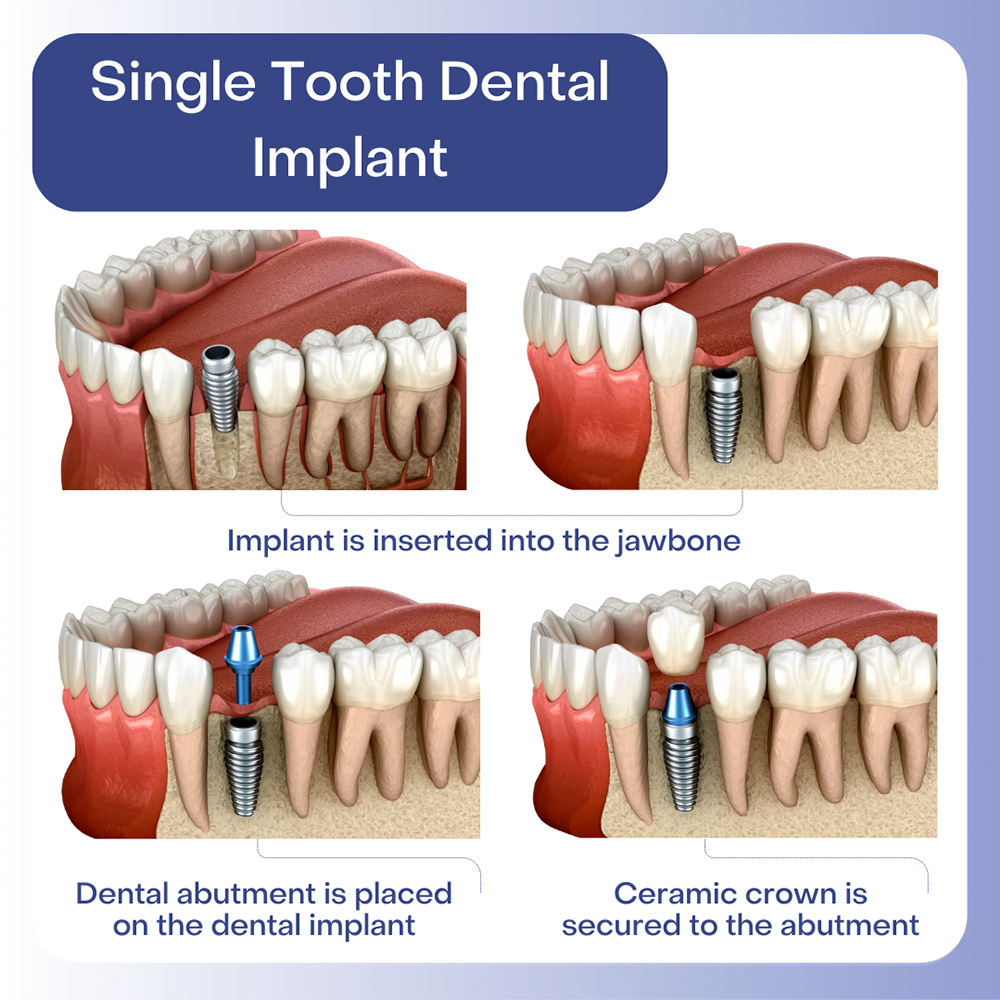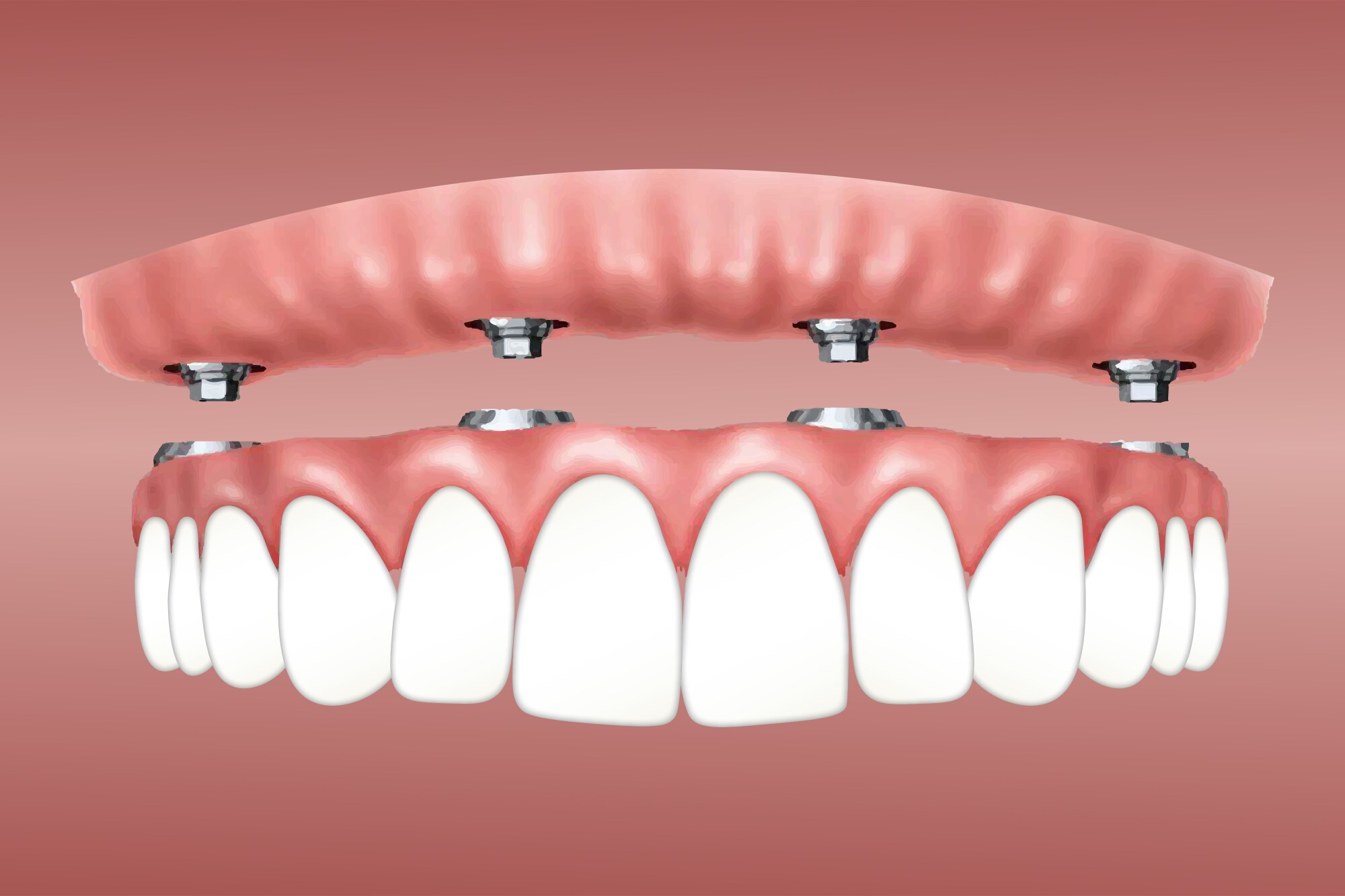7 Easy Facts About Dental Sense Described
7 Easy Facts About Dental Sense Described
Blog Article
6 Easy Facts About Dental Sense Shown
Table of ContentsHow Dental Sense can Save You Time, Stress, and Money.Dental Sense - The FactsDental Sense Things To Know Before You Get ThisSome Of Dental Sense
are clinical gadgets surgically dental implanted right into the jaw to recover a person's capability to chew or their appearance. They offer support for synthetic (phony) teeth, such as crowns, bridges, or dentures. When a tooth is shed as a result of injury or illness, a person can experience difficulties such as fast bone loss, defective speech, or adjustments to eating patterns that result in pain.Oral implant systems consist of a dental implant body and dental implant joint and may also include an abutment addiction screw. Cosmetic dentistry services. The oral implant body is operatively put in the jawbone instead of the tooth's root. The oral implant joint is usually connected to the implant body by the abutment addiction screw and extends via periodontals into the mouth to support the attached synthetic teeth
(https://www.avitop.com/cs/members/dentalsense1.aspx)Framework of The Dental Implant System selecting dental implants, talk to your oral service provider about the possible benefits and threats, and whether you are a prospect for the procedure. Points to consider: Your total wellness is a vital element in figuring out whether you are a good prospect for dental implants, just how long it will certainly require to heal, and how much time the implant might remain in place.
Smoking cigarettes might impact the healing procedure and reduce the long-term success of the implant. The healing procedure for the dental implant body may take a number of months or longer, during which time you usually have a momentary joint instead of the tooth. the oral implant procedure: Very carefully adhere to the oral hygiene directions offered to you by your oral service provider.
Dental Sense Fundamentals Explained
Implant failing can lead to the demand for an additional surgical procedure to take care of or change the implant system. Brings back the capability to chew Recovers cosmetic look Helps maintain the jawbone from diminishing because of bone loss Maintains the health of the surrounding bone and gum tissues Helps keep surrounding (neighboring) teeth stable Boosts top quality of life Damage to bordering all-natural teeth during implant positioning Injury to the surrounding tissues during surgical treatment, such as sinus opening Injury during surgical treatment (for instance, fracture of surrounding jawbone) Poor function, such as seeming like the teeth do not attack together generally A feeling that the tooth hangs or twisting in location resulting from an abutment screw loosening Implant body failing (looseness of the dental implant body) as a result of systemic infection, which may be more likely in individuals with unrestrained diabetes as a result of local infection in bone and periodontals supporting the implant body because of delayed healing, which might be most likely in patients that smoke Problem cleaning up the gums around the dental implant, resulting in inadequate dental health Untreated gum illness Post-surgical feeling numb as a result of nerve impingement or damage Constantly alert healthcare service providers and imaging service technicians that you have dental implants before any kind of magnetic vibration imaging (MRI) or x-ray procedures.
FDA is not mindful of any type of unfavorable events reported for MRI or x-ray procedures with oral implants. Dental implants systems are normally made from materials that follow worldwide agreement requirements of the International Company for Standardization (ISO) or ASTM International. These requirements have information of what makes a secure product.

An oral implant is a structure that replaces a missing out on tooth. With screw-like tools, the specialist inserts an implant right into the jawbone, and it works as an anchor for a fabricated tooth, called a crown. A gadget called a joint links the artificial tooth to the oral implant. The crown is tailor-made to fit the person's mouth and match the shade of their teeth.
The smart Trick of Dental Sense That Nobody is Talking About
Some individuals are not eligible for oral implant surgery. It is for oral doctors to run on people with: severe illnessuncontrollable metabolic diseasebone or soft tissue disease or infectionIf these problems are fixed, an individual can have the surgery. In, oral specialists avoid running on people with: If individuals with any one of the above undergo dental implant surgical procedure, there is a higher danger of the dental implant falling short.

Dental implant surgical procedure is a personalized process. It's not the find more information same for every person. However the following gives a general introduction of what you can anticipate your dental practitioner, dental doctor, periodontist or prosthodontist to do: Put the dental implant surgically. Offer you time to heal. Affix the post and final crown, bridge or denture.
Next off, your specialist will very carefully place the oral implant right into your jaw. Your doctor will reposition your gum tissues and shut the cut with stitches. If your dental implant is near the front of your mouth, your dental practitioner will certainly make a short-term tooth for you to wear till you heal. By doing this, you won't have a void in your smile while you recover.
The Facts About Dental Sense Revealed
During the recovery stage, your jawbone needs to fuse to the dental implant. This procedure can take anywhere from 3 to 9 months.
As soon as your implant heals, your dentist can connect the abutment (tiny adapter message) and your final restoration (crown, bridge or denture). This generally takes about one hour to finish and may need a 2nd minor surgical procedure. You shouldn't feel any kind of discomfort throughout your dental implant treatment since your company will certainly make use of drug to numb your periodontals.
Report this page